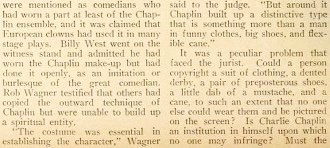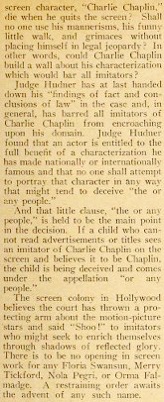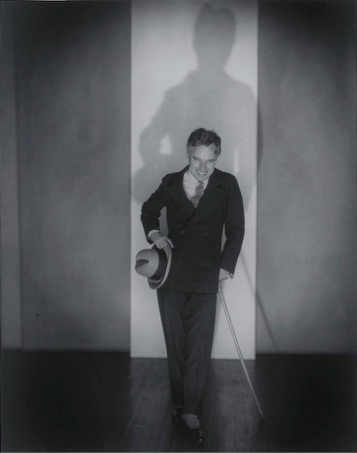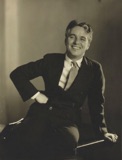The Gold Rush 1923 1924 1926 next previous
The Gold Rush Clippings 314/363
John Addison Elliott, Picture Play, New York, November 1925.
Edward Steichen, self-portrait in studio,
New York, 1929
& Edward Steichen (photographer), Charles Chaplin,
warm-toned matte gelatin-silver print,
inscribed „Chaplin,“ „V. F. 1925,“ and numbered „145“ and
„2001“ in unidentified hands in pencil on the reverse,
matted, 1925,
Sotheby‘s, Photographs from The Museum of Modern Art,
New York, Saturday, April 23, 1994
– Edward Steichen, A Life in Photography:
„Of course I had favorites, Charlie Chaplin was one“ (...)
„when we got Chaplin in the studio and started
to arrange the lights, he froze. I dismissed my assistants
and tried to work alone with him, but nothing
happened. Finally Chaplin said, ,You know, I can‘t just sit still.
I have to be doing something. Then I‘m all right.‘
So I stopped working and got a portfolio of my photographs,
including the Sunflower series, which interested
him very much. He made one remark, ,I‘m curious, the closer
you get to nature, the more mysterious it becomes.‘
Then I started to talk to him about his films, and as I waxed
enthusiastic about The Gold Rush, the film
he had just released, he loosened up and became
enthusiastic in turn. I called the men in and
in a few minutes I had a half-dozen portraits of Chaplin
relaxed and himself.“
& Edward Steichen (photographer), Charles Chaplin,
New York, 1931, pinterest
& Edward Steichen (photographer), Charlie Chaplin,
New York, 1925, Discovering Chaplin
& Edward Steichen (photographer), Charlie Chaplin,
New York, 1925, Museum of Fine Arts Boston
(...) Vanity Fair, Sept. 1926
„On the witness stand“
Editorial content. „Charlie Chaplin Wins His Derby.
And in winning his fight in the courts, he has established
a precedent which Hollywood believes will protect
the fans against future imitators of other stars.
By John Addison Elliott.
Every fan who has ever come out of a movie theater,
disgusted at having seen a poor imitation of one
of his favorite stars, will be interested to know that Charlie
Chaplin‘s successful fight to keep his imitators off
the screen will do much to discourage that type of effort
in the future.
Chaplin‘s suit was to restrain one Charles Amador from
adopting his style of dress and mannerisms and from
appearing on the screen under the name of ,Charlie Aplin.‘
On the witness stand Chaplin told of his years
of effort to develop an entity that would be known by sight
whenever on the screen.“ (...)
Redaktioneller Inhalt
The Gold Rush 1923 1924 1926 next previous







